Affordable, Effective Lung Cancer Screening at Lexington Diagnostic Center
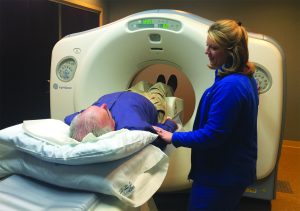 It should come as no surprise that Kentucky leads the nation in lung cancer deaths, especially when you consider another dubious distinction the Commonwealth holds: the highest smoking rates in the nation.
It should come as no surprise that Kentucky leads the nation in lung cancer deaths, especially when you consider another dubious distinction the Commonwealth holds: the highest smoking rates in the nation.
Because smoking is the No. 1 cause of lung cancer, the single most important thing you can do to reduce your risk of developing lung cancer is to stop smoking. The minute you stop smoking, your body begins to heal and your risk starts to fall. Within two months of stopping, your lung function begins to improve; after 10 years, your risk of being diagnosed with lung cancer is 30 to 50 percent of that of a smoker.
Regardless of whether you?ve recently quit smoking, you quit five years ago, or you continue to smoke, as they age, most people begin to think about their lungs and the damage they?ve inflicted by smoking. Unfortunately, there hasn?t always been a good way to detect lung cancer early, when the chances for a cure are greatest.
A few years ago, the U.S. Preventive Services Task Force (USPSTF) came out in support of a screening exam that a large-scale study demonstrated was effective at finding lung cancer early. The test is called low-dose computed tomography, or LDCT. At Lexington Diagnostic Center and Open MRI, we?ve been offering this testing for over a decade, even before the USPSTF published its findings.
Along with the USPSTF support came a recommendation that people at high risk for developing lung cancer receive the screening every year. As a result, private insurers (such as Anthem, Cigna and United Healthcare) may cover the cost of the exam for eligible patients, as do Medicare and Medicaid.
Who?s eligible for the screening
The criteria for the screening are strict, but are based in medical research. To be eligible for the screening:
- The individual must be between the ages of 55 and 80 (Medicare coverage to age 77 only) and in good enough health to withstand potential treatment for cancer, should something be found.
- The person must have a 30-year pack history of smoking. A 30-year pack history means the patient smoked about a pack a day for 30 years, or two packs a day for 15 years, and so on.
- The individual may currently smoke, or may have quit smoking less than 15 years ago. Congrats ? after 15 years as a non-smoker, former smokers are no longer considered to be high risk!
- Annual screening is to be discontinued when the patient has been smoke-free for 15 years or if their health declines to a level at which they would no longer be able (or interested) in curative treatment for lung cancer.
It may seem odd that people who have symptoms of lung cancer are not eligible for the screening. But remember, the screening is designed to detect cancer early. If you have symptoms, by definition, early detection is off the table and a different set of protocols applies.
What does the screening involve?
The screening is quick, simple and painless. Patients are taken to a private room, where they may be asked to change into an exam gown. They are then positioned on a table and the technologist leaves the room. The technologist will be in constant contact with the patient throughout the exam. The table will move into the CT tube and a series of X-rays will be taken. Patients may be asked to hold their breath for short periods of time. When the exam is finished, the table will move out of the tube and the technologist will assist the patient from the table. The actual exam takes no more than 10 minutes.
The images will be read by LDC?s radiologist and the findings sent to the referring physician within two business days.
The Lexington Diagnostic Center advantage
Lexington Diagnostic Center and Open MRI has been performing low-dose CT screenings for lung cancer longer than any facility in the area. Our technologists and physicians are very experienced in LDCT and very sensitive to the concerns of our patients.
Just as importantly, low-dose CT screening at Lexington Diagnostic Center is affordable. Because imaging is the focus of our business, we keep our costs low and pass the savings on to our patients. LDCT screening at Lexington Diagnostic Center is hundreds of dollars less expensive than a screening performed at a local hospital. We accept all major insurance plans and will work closely with you, your physician and your insurance company to ensure coverage for the test. You will know up front what your cost is ? no surprise bills 30, 60 or 90 days later!
Want to know more?
Talk with your primary care provider about low-dose CT screening for lung cancer and let them know you want to go to Lexington Diagnostic Center and Open MRI for testing. Or, give us a call at 859-278-7226, or contact us via our website at?lexingtondiagnostic.com.
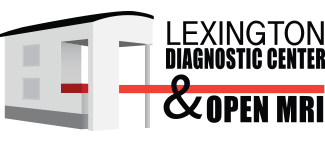
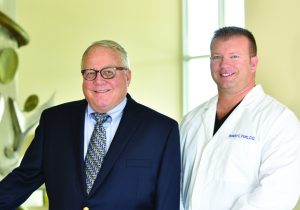 When you hear the word doctor, your mind naturally goes to those physicians with whom you interact ? your family doctor, cardiologist, even the physician who treated you in the emergency department.
When you hear the word doctor, your mind naturally goes to those physicians with whom you interact ? your family doctor, cardiologist, even the physician who treated you in the emergency department.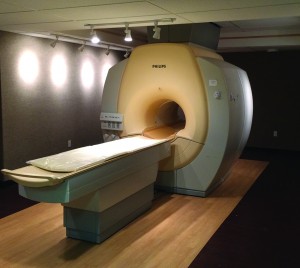 Chances are, you or someone you know has needed an MRI scan at some point. We?ve at least all heard of an MRI and might imagine?ourselves getting in to that big white tube! But what exactly are we getting ourselves in to? With the help of Paula Bracken, chief radiologic technologist at Lexington Diagnostic Center & Open MRI, let?s explore what you should know, consider, and expect when you need an MRI.
Chances are, you or someone you know has needed an MRI scan at some point. We?ve at least all heard of an MRI and might imagine?ourselves getting in to that big white tube! But what exactly are we getting ourselves in to? With the help of Paula Bracken, chief radiologic technologist at Lexington Diagnostic Center & Open MRI, let?s explore what you should know, consider, and expect when you need an MRI.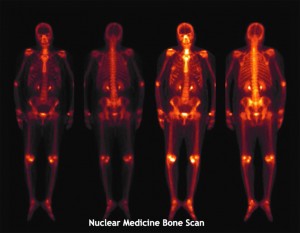 We often don?t give much thought to the forces around us ? gravity, electromagnetic fields, sound waves, light, radio waves, radiation.?But the discovery and study of these natural forces, and our own creativity, led to the development of one of the most important fields of medicine today:
We often don?t give much thought to the forces around us ? gravity, electromagnetic fields, sound waves, light, radio waves, radiation.?But the discovery and study of these natural forces, and our own creativity, led to the development of one of the most important fields of medicine today: